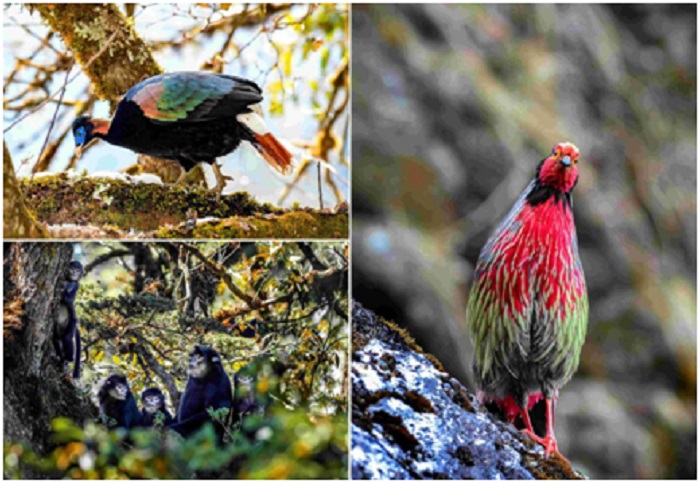



Southwest China’s Yunnan Province is one of the biodiversity hotspots of the world. It has all types of ecosystems except for marine and desert ecosystems.
It is home to 2,242 vertebrates and 19,333 known land plant species, 51.4 percent and 50.1 percent of the country’s total, respectively.
In recent years, new species have been found in the province every one or two weeks. For instance, on Gaoligong Mountain of Yunnan’s Baoshan, over 100 new species were discovered in the recent 10 years.
Zhang Ting, a staff member with Kunming Institute of Botany, Chinese Academy of Sciences (CAS), told the People’s Daily that the discovery of new species in Yunnan Province was not a coincidence.
He attributed the rich biodiversity of the province to the local mountainous and fluvial landforms. Besides, the province’s low-latitude plateau has created both tropical rainforests and talus slopes, he said. Hornbills are gliding in monsoon forests, while black snub-nosed monkeys are swinging between firs.
Zhang and his team spend around four months each year in the fields, collecting seeds for a national germplasm bank of wild species. They have gathered 85,046 seeds of 10,601 species, which is a huge backup for Chinese plants.
“It’s like buying an insurance for wild plants and saving their seeds in the bank. Once needed, these seeds would go back to the fields, which is another way of protecting the species,” Zhang said.
Apart from the collection and preservation of germplasm resources, rare animal species are also well protected in Yunnan Province.
Green peafowl is a critically endangered species. There are only less than 600 of them in China, all of which are distributed in Yunnan Province. According to monitoring data from the Kunming Institute of Zoology, CAS, the number of green peafowl in the Konglonghe Nature Reserve in Shuangbai County, Chuxiong Yi Autonomous Prefecture of central Yunnan has risen from 52 in 2015 to nearly 100. In addition, an artificial breeding and reintroduction program was launched last year, which has created brighter prospects for the population restoration of the species.
There are also many other rescued species. For instance, the number of black snub-nosed monkeys has grown to over 3,000 from 1,400 some twenty years ago, and that of black-necked cranes which spend winter in the province has also exceeded 3,000, from around 1,600 in 1996.
Today, nearly 1/7 of Yunnan’s territory is protected as nature reserves. According to statistics, the province has approved and built 362 nature reserves, and 90 percent of important ecosystems and nature reserves for endangered and protected species of the country are effectively protected.
Besides, Yunnan Province has also been improving institutions and mechanisms related to biodiversity protection. In 2019, it launched a local regulation on protecting biodiversity, trying to maintain species variety in terms of legislation.


The Humanitarian Service Diamond Awards has.
A Chinese Company, Inner Galaxy Steel.


The Programme Coordinator, Regulatory, Compliance and.


A Non-Governmental Organization (NGO), Committee for.
The Trustfund Pensions Limited has chided.


The House of Representatives Committee on.
The China General Chamber of Commerce.


Senator Chuka Utazi who represented Enugu.


An Abuja based Legal Practitioner, Ugochukwu.


The African business community in Yiwu,.
Leave a Comment